This master list of finger foods for toddlers, babies, and kids is your go-to list for healthy and delicious foods the kids can feed themselves…and easily and safely chew!
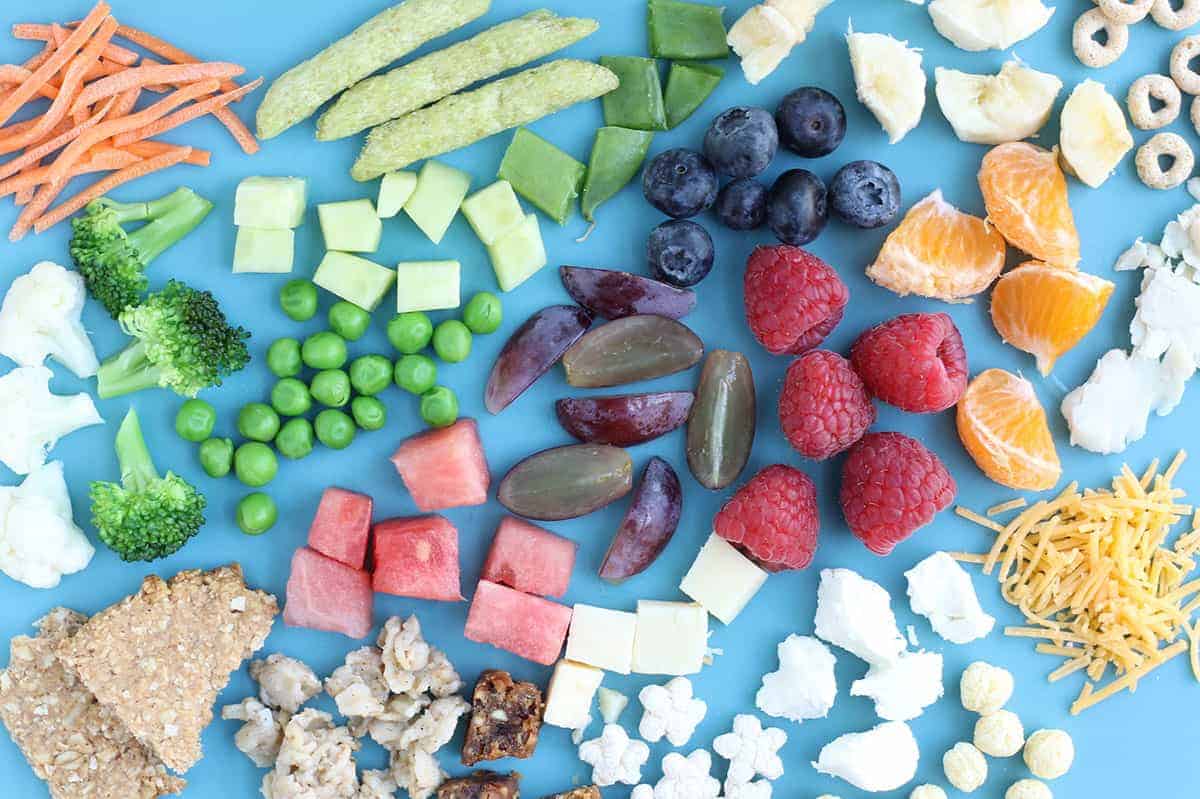
Finger Foods for Toddlers
When little ones want to feed themselves, which often happens soon after starting solids, it’s a perfect time to introduce healthy, fresh foods to make the most of their enthusiasm. Fruits, veggies, whole grains, meats, fish, beans, and more are easy finger foods for kids that are often super easy to prepare and easy for the kids to pick up and eat.
In this post you will find lists of recommended foods for toddlers, suggestions for how to cut and prepare them, and images of examples of what those foods may look like as your child grows.
I love to keep healthy finger foods in the mix even as kids get older since they make for simple, healthy snacks for kids that are usually low cost and low prep.
(You may also like finger foods for baby, baby snacks, healthy toddler snacks, toddler breakfast ideas, and toddler lunch ideas.)
Table of Contents
- Finger Foods for Toddlers
- How to Serve Finger Foods to Kids, Step-by-Step
- First Finger Foods for Babies
- Finger Foods for Toddlers and Babies: Fruit
- Finger Foods for Toddlers and Babies: Vegetables
- Finger Foods for Kids: Dairy
- Finger Foods for Toddlers and Babies: Meat/Poultry/Fish
- Finger Food Ideas: Legumes/Nuts
- Finger Foods for Kids: Whole Grains
- Easy Finger Food Ideas: Snacks
- Frequently Asked Questions
- Finger Foods for Kids at Daycare
- Best Tips for Success
How to Serve Finger Foods to Kids, Step-by-Step
- Wash, dry, and prepare food so it’s easy to chew. This often means cutting the food into bite-size pieces or thin slices, especially for younger toddlers.
- A good rule to help prevent toddler choking or excessive gagging is to avoid anything hard (like a raw carrot), round (like a slice of hot dog or a whole grape), sticky (like a spoonful of nut butter), or very chewy (like gummy candy).
- Offer a dip or sauce with raw produce to add flavor and nutrients.
- Model eating a new food to help the kids understand how to eat and bite it, as needed.

First Finger Foods for Babies
Foods that squish easily between your fingers are a safe bet for babies and younger toddlers. Think cooked peas, raspberries, chunks of banana, diced avocado, and soft cheese. Aim to cut food into small pieces—roughly the size of a pea or two—as they start eating finger foods to give them plenty of chances to practice eating and chewing.
Always adjust sizes of foods to suit the age and eating experience of your own child and add more complicated textures as they grow.
If you are just starting out with baby-led weaning foods or if baby is younger than 9 months, longer sticks of food are usually easier to pick up and self feed. Once a baby has mastered her pincer grasp around the age of 9 month and can pick up a food like a puff or a Cheerio with their fingers, you can move on to soft diced foods.
TIP: Check out my best first finger foods for babies for more ideas.
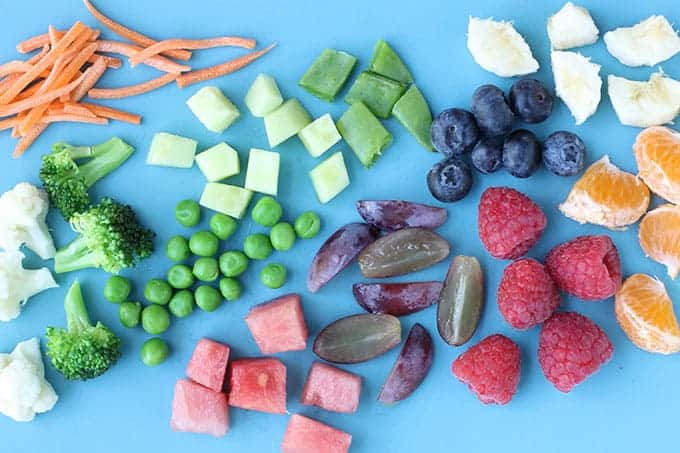
Finger Foods for Toddlers and Babies: Fruit
Fruit is a wonderful finger food for kids since it’s often very flavorful and usually needs little to no prep. Below are some of my favorite fruits for kids, along with serving suggestions
- Apples, shredded or cut into matchsticks, or steamed or sliced baked apples that are roasted until soft. (See apples for babies.)
- Bananas, broken up and sectioned (these are easier to pick up than slices, which can be slippery)
- Blackberries, halved if large
- Blueberries, halved if large
- Cantaloupe, diced (make sure it’s very ripe and soft). (See cantaloupe for baby.)
- Cherries, pitted and chopped. (See cherries for baby.)
- Clementines or oranges, halved or diced. (See oranges for baby.)
- Grapes, sliced in half or quarters vertically. (See grapes for kids.)
- Honeydew, diced (make sure it’s very ripe and soft)
- Kiwi, diced
- Mango, diced (make sure it’s very ripe and soft)
- Pears, diced with or without the skin or cut into matchsticks (make sure they’re very ripe and soft)
- Raspberries, halved if large
- Strawberries, diced
- Watermelon, diced or in sticks (See watermelon for baby.)
TIP: See my Master List of Fruit for Kids.
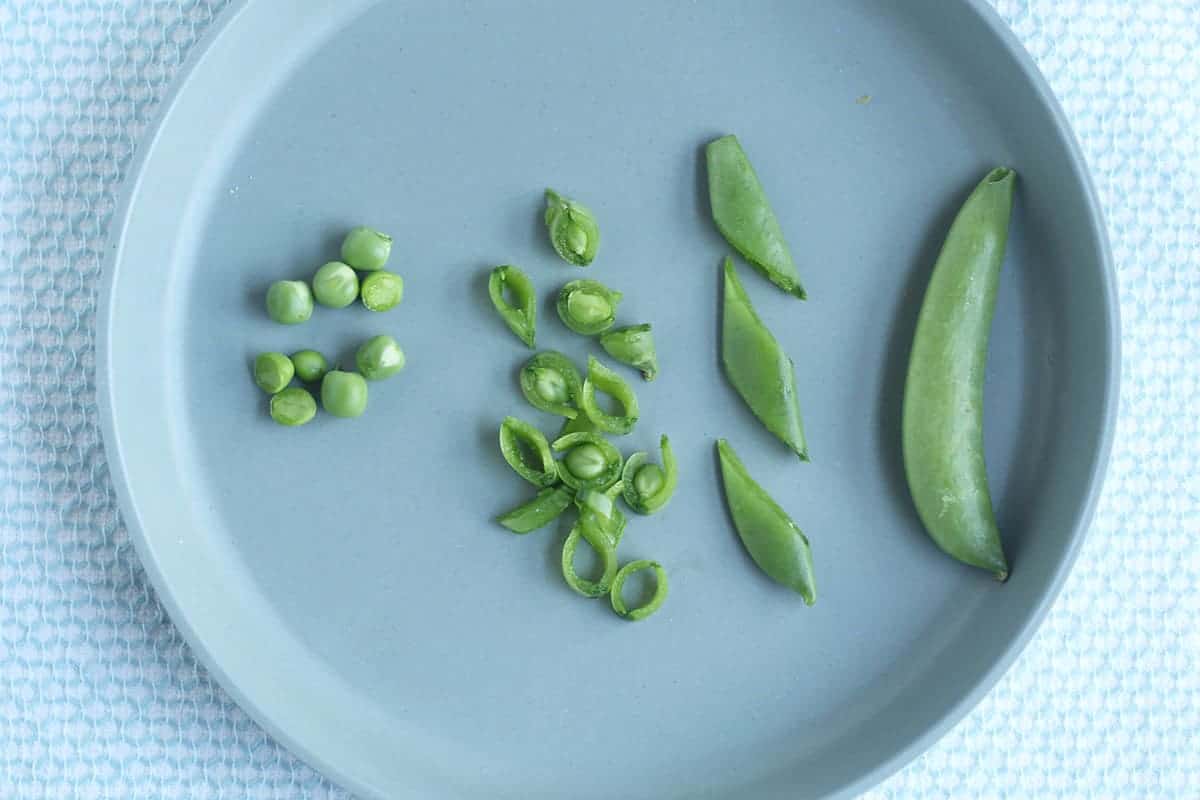
Finger Foods for Toddlers and Babies: Vegetables
Most raw veggies will be too hard for little ones to chew, so read the suggestions below for easy ways to cook them—and for advice on which work well served raw.
- Avocado, cubed or sliced
- Broccoli florets, steamed or roasted. (Try Roasted Frozen Broccoli.)
- Butternut squash, steamed or roasted until soft. (Try Mashed Butternut Squash.)
- Carrots, shredded and served raw to toddlers over 18 months, or diced and steamed or roasted until soft. (Try Sauteed Carrots and Carrot Fries.)
- Cauliflower florets, steamed or roasted. (Try Steamed Cauliflower.)
- Cherry tomatoes, halved or quartered
- Cucumbers, sliced or diced (you may want to wait until at least 18 months and then remove the skin)
- Snap peas for kids, diced fresh for kids over 2 or steamed for younger eaters
- Sweet potato, peeled, diced and roasted until soft, or roasted whole until soft and served in pieces
- Thawed frozen corn
- Thawed edamame, cut in half as needed
- Thawed frozen peas
- Zucchini or yellow squash, diced or sliced and sauteed, steamed, or roasted. (Try my best zucchini recipes.)
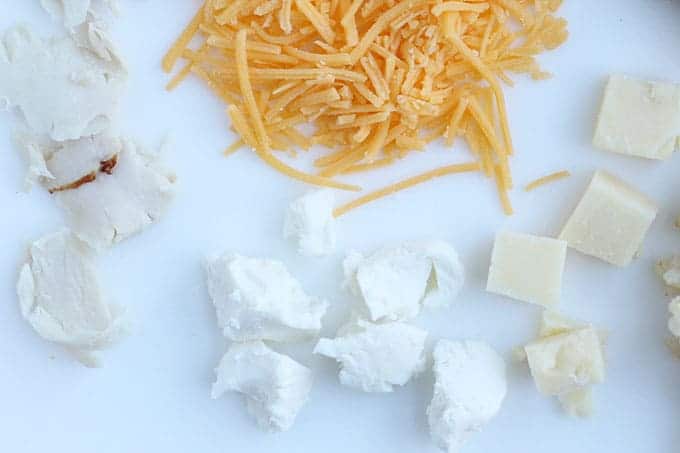
Finger Foods for Kids: Dairy
Dairy is an often overlooked finger food for kids, but there are so many easy ways to serve it!
- Cheese, diced or shredded. (Learn more about cheese for toddlers.)
- Cottage cheese, 4% offered on preloaded spoons or on a highchair tray (yes, it’s messy!)
- Egg muffins, diced
- Frozen yogurt melts
- Goat cheese, crumbled
- Hard cooked eggs, diced (yolks may be easier to chew, but some kids like only the whites)
- Scrambled eggs
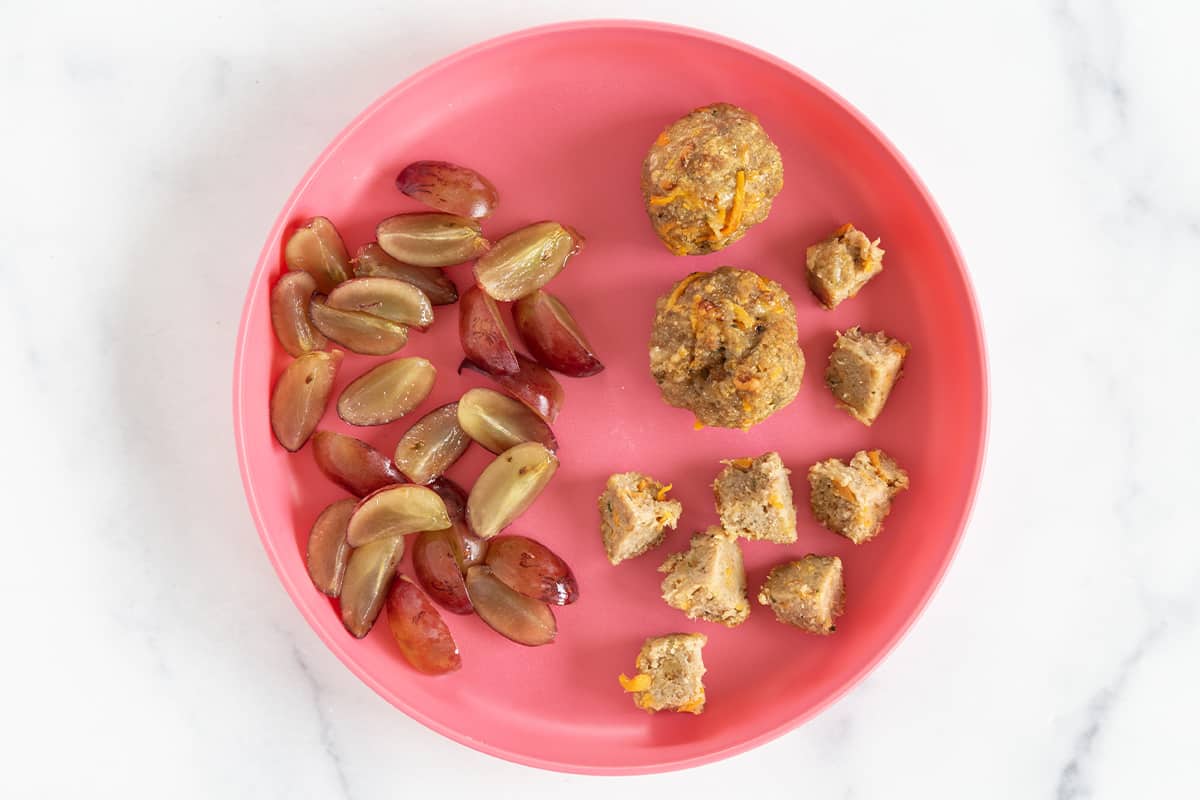
Finger Foods for Toddlers and Babies: Meat/Poultry/Fish
It’s easy to serve meat, poultry, and fish to little kids as long as it’s soft and easy to chew. Here are some ideas.
- Beef, ground and cooked through and either diced (if in something like a healthy meatball) or served mashed.
- Beef, shredded (anything cooked in a slow cooker or Instant Pot and shredded is likely to be an easy texture to chew)
- Chicken, diced (just be sure it’s not too dry)
- Chicken, ground and cooked through and either diced (if in something like a baked chicken meatball) or served mashed
- Chicken, shredded (anything cooked in a slow cooker or instant pot, like my Butter Chicken, and shredded is likely to be an easy texture to chew)
- Deli meat (sliced turkey, ham, or salami, cut up into small pieces)
- Fish sticks
- Meatballs, diced or slightly mashed
- Salmon, poached or baked and diced or shredded
- Shrimp, cooked until very soft and diced
- Tilapia, cooked and shredded
- Turkey, roasted breast or thigh meat and diced or shredded; or ground and cooked through; or Turkey Baby Meatballs
- White fish, cooked through and diced or shredded
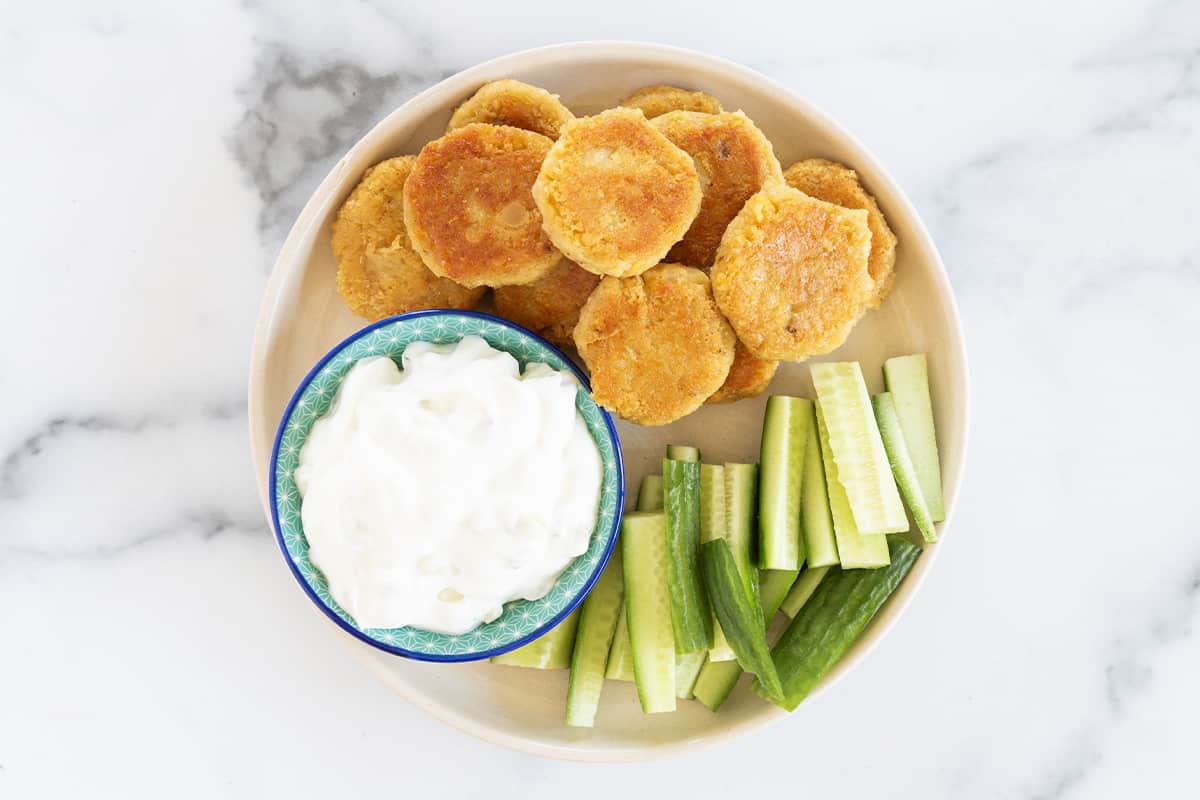
Finger Food Ideas: Legumes/Nuts
You may want to mash beans slightly to make sure they are soft for the kids.
- Chickpeas (like Soft-Baked Cinnamon Chickpeas) or in these Chickpea Fritters
- Edamame, steamed or boiled according to package directions
- Energy bites, diced
- Hummus (with a cracker for dipping)
- Larabars minis, diced (for over 12-18 months)
- Finely chopped cashews and walnuts (2 or 3 and up)
- Nut butter (on toast cubes or sticks)
- Thawed frozen peas
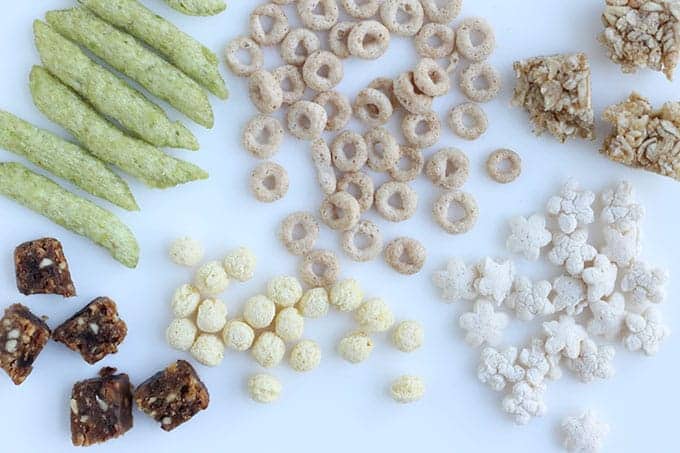
Finger Foods for Kids: Whole Grains
Whole grains, whether cooked from scratch or served in a food like bread or a muffin, are a nutritious category of finger food ideas.
- Applesauce Pancakes, diced
- Baked French toast, diced
- Baked Oatmeal Cups
- Cheesy Rice, fully cooked until soft with mashed avocado or shredded cheese to help it hold together as needed
- Crackers, whole grain (Breton and the whole grain mini rounds in the brown box from Trader Joes are nice and soft)
- Oatmeal, cooked until it’s nice and thick so it’s easy to pick up with fingers (you can also add 1 teaspoon chia seeds, let sit for 5 minutes, and it will thicken up)
- Quinoa, fully cooked until soft with mashed avocado or shredded cheese to help it hold together as needed
- Soft snack bars, homemade granola bars, or Dino Bars
- Spinach Muffins, diced
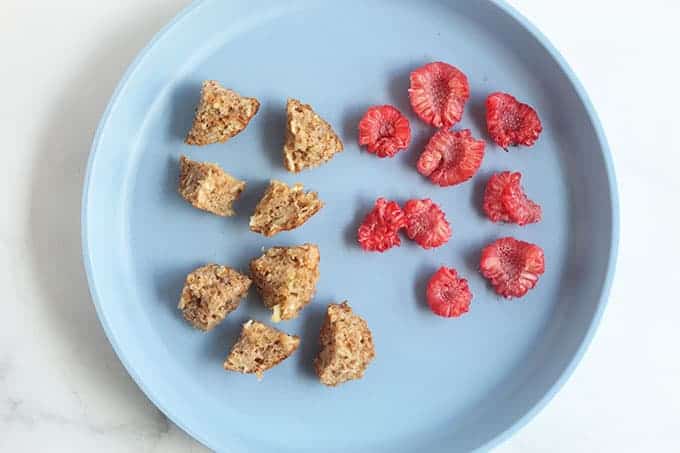
Easy Finger Food Ideas: Snacks
Having a few go-to store-bought snack food options is super handy. These are some of my favorites.
- Animal Crackers
- Baby Puffs (like Plum Organics or Happy Baby)
- Cereal for kids (low sugar): Cheerios, Kix, Chex
- Cheese crackers
- Mini rice cakes
- Nature’s Bakery Fig Bars, and Dino Bars
- Quinoa Chips (these are softer than regular chips, and high in protein; best for over 2 or 3)
- Snap pea crisps
- Veggie Straws
- Whole grain crackers
- Whole grain graham crackers
Frequently Asked Questions
Absolutely! Gums are incredibly strong, as is the tongue, so how many teeth your baby or toddler has (or doesn’t have!) is not an indication of how well they will be able to eat finger foods. The key is to make sure that the foods are soft enough for them to chew and the pieces are an appropriate size.
Cut the foods into bite-size pieces or thin strips, make sure the food is easy to chew, model biting the foods if the food is new, make sure the food tastes good, and focus on other things during meals to avoid putting too much pressure on the child.
Yes, that is quite common and can be quite unpredictable. Here’s more information on what to do when a toddler is not eating.
Finger Foods for Kids at Daycare
The foods in this post can be really helpful when packing food for daycare to make meals easy for your baby or toddler to eat. Aim for a mix of nutrients with whole grains, protein, fat, and lots of produce to help them meet their nutrient needs.
The lists in this post are designed for kids over 9 months. For younger babies doing baby-led weaning, serve foods in longer/larger pieces as needed, and avoid anything that’s not soft enough for them to easily chew. (The foods should still squish between your fingers easily or dissolve quickly like a puff.)
Sit with your kids whenever they eat and especially whenever they try new foods to see how they handle it—and so you can see if you need to cut things bigger or smaller to meet them where they are.
Best Tips for Success
- Review the common toddler choking hazards to ensure meals and snacks are safe.
- Cut foods into bite-size pieces or model how to take bites if the kids are still learning.
- Remember that any food can be a finger food!
- Aim to include a variety of food groups in finger foods for toddlers throughout the week.
Related Posts
I’d love to hear your feedback on this post, so please comment below!
This post was first published May 2017.
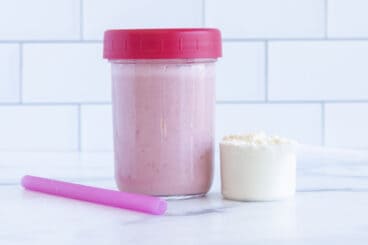
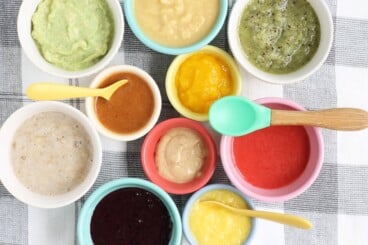
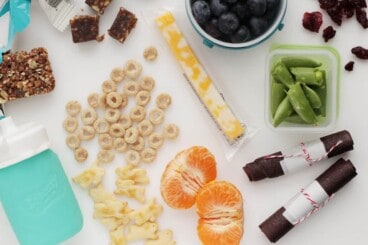
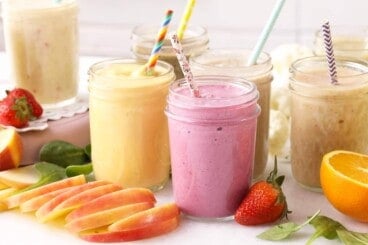
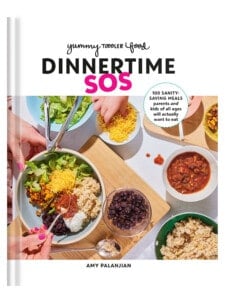
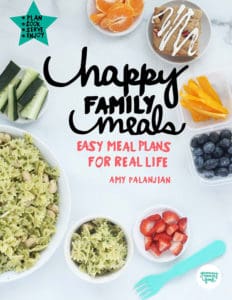
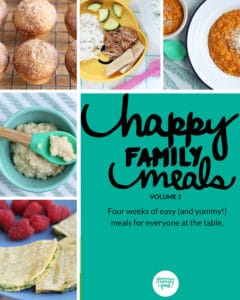
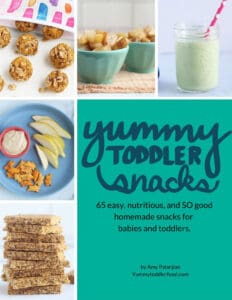














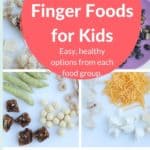
I love this! But I have a pressing question. My son is 19 months but he still only has 7 teeth (3 top front and 4 bottom front) does everything still apply the same although he doesn’t have many teeth yet! Thanks!
Hi- the number of teeth doesn’t matter since toddlers chew with their gums mostly. So it should all be the same.
Hi Amy
Thanks for sharing these recipes and all the tips throughout your blog. I really appreciate it!
You are so welcome!
Hi!
Thank you so much for providing such detailed tips. My daughter is 14 months and was born premature so she’s 11 months adjusted. Starting solids has been slightly confusing for us. I love the organization of this guide and it gives an idea of what to incorporate in her meals. With the help of her nutritionist and this guide I feel more confident.
I am so glad to hear that!
Hi Amy,
I have a 13 months old who doesn’t really chew her food.
I cut everything pea sized . Sorry for the details, but I can even find undigested food such as pees and carrots in her diaper.
Tried giving her a banana- she knows how to bite but she just spits it out if too big.
Do you have any suggestions?
Thank You!
Hi- It’s not usual for that to happen and will gradually decrease as she becomes more able to chew and mash foods. I would continue to make sure that the food you offer her is soft and small in size and start to progress to larger pieces over the next 3-4 months. Learning to eat is a process and it sounds like she’s doing great for her age!
Thank you so much for your answer !
i have a 19 months old girl who is picky about what she eats and sometimes i feed her veggies or something i think is healthy and good but i’m overly worried about what i give her afraid of choking. But sometimes she does this whole thing of taking her hands and swiping food out of her mouth. Overall i’m worried she’s not getting the right nutrients cause all she wants is mac and cheese. What can i do? Meals to send with her to daycare is a challenge to!!!! HELP!
Hi. I’m sorry that you’re worried—feeding kids is hard! Here’s a post with info on choking that I hope is reassuring. There’s really no way to be 100% sure that a toddler is getting perfect nutrition and really no child does. It may help to zoom out and look at what she’s eating over the course of a whole day or week since they really can vary a lot on what they like and how much they eat. It’s very normal for little kids to have their favorites so I try to serve 1-2 foods they usually like with each meal in the mix of the food we’re all eating as a family. For daycare, maybe make a list of the foods she likes right now and see if you can think of similar foods to expand it out just a smidge? It’s okay if you have 3-5 lunches that you rotate through. most days. This is not a contest—do the best with what you have on any given day. Feel free to email me at yummytoddlerfood at gmail.com for more help if you need it.